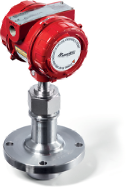

In the chemical laboratory, however, viscometers with at least ± 2 % should be used. Often the viscometers with an accuracy of ± 3 % can be found in the production laboratories. Which reproducibility of the results and / or which measuring accuracy should be achieved? Also, the surrounding pressure is also a critical parameter, which influences the comparability of the measured values. However, it also depends on the type of the fluid to be measured, whether a temperature control is needed or not. In this way, the same general conditions always prevail and you can expect a high comparability of the measured values. Therefore, in order to obtain always comparable measured values, it is recommended to use a tempering bath. The dynamic viscosity generally decreases with the fluid’s temperature increase. Is a temperature measurement / temperature control on the viscometer necessary? For example, further you can see the classification of some known substances: There are tables in the literature which approximately depict the expected viscosities of different fluids. You can assess the viscosity range of the liquid you are testing. What measuring range / viscosity range do the liquids to be tested have? In the case of a plastic flow, a limit value of the shear stress must first be exceeded, in order to start the flow process. Please, think at once what type of the fluid you are testing. The shear velocity-dependent flow process is called dilatancy and the time-dependent flow process is referred to as thixotropy. When it goes about measurement in liquids, first, a distinction between Newtonian liquids (linear relationship) or non-Newtonian liquids (time- and shear velocity-dependent flow process) must be made. What is the application area / What type of liquid do you measure (Newtonian, non-Newtonian, dilatant, thixotropic or plastic)?Īs you can see from the question, you want to measure viscosity in liquids and not in gases. In this case, it makes sense to talk to one of the technicians of PCE Instruments on the telephone or to arrange an appointment with our sales representative. If you would like to use the viscometer in the process for continuous measurement of the viscous liquid, then there are a few more questions on this topic for you to answer, besides these initial ones.
#CST UNIT FOR VISCOSITY PORTABLE#
What kind of viscometer (handheld-, table- or built-in device) do you need?ĭo you need a table - viscometer, which you might like to use once as a mobile device – or should it be really a portable (handheld) instrument? What basic questions should you ask yourself before buying – which points should you discuss with the seller? Below you may find a short list of possible questions and answers.

To learn more about viscometer applications and the importance of fluid behavior, please watch the video and read the informative brochures provided below. Whether in use in the laboratory or on the production floor, PCE Instruments' easy-to-use viscometer devices provide accurate, reliable viscosity measurements. 1 millipascal-second (mPa.s) = 1 centipoise (cP) Nature of your fluid (Newtonian, non-Newtonian, dilatant, thixotropic, etc.) Required rotational speeds or shear rates Viscosity range of your fluid (low, medium or high) To determine the right viscometer for your application, consider the following factors: Benchtop or stationary viscometer devices are complex rheological measuring systems that allow for a more detailed examination of liquid samples. Handheld or portable viscosity meter devices allow users to take simple, single-point measurements in the field and in the lab. PCE Instruments offers a variety of handheld, portable, benchtop and in-process, real-time viscometer products that measure the absolute / dynamic (shear) and kinematic viscosity of fluids. Companies can save money by placing a viscometer in a production line and making fluid viscosity measurements in real time. A viscometer can be an important component in process and quality control. The technical term to refer to this is extensional viscosity.Ī viscometer is frequently used in laboratories, but it also has practical applications in factories and other industrial environments.

However, a fluid's viscosity also may be measured on the basis of stretching. Rotational viscometers with rotating spindles or rotors, also known as "cup and bob" or Searle viscometers, are the most common tools used to measure the shear viscosity of fluids. The term viscosity typically refers to shear viscosity, i.e., how a material reacts to being sheared.

A viscometer, viscosity meter or rheometer is a measuring instrument used to determine a fluid's internal flow resistance or viscosity.


 0 kommentar(er)
0 kommentar(er)
